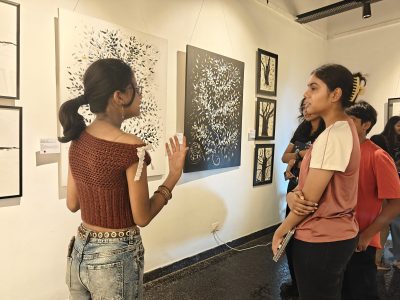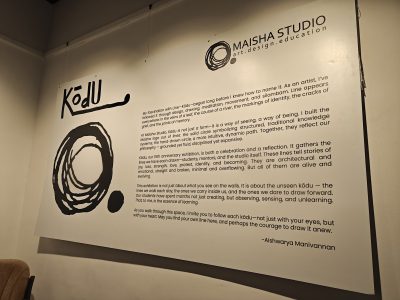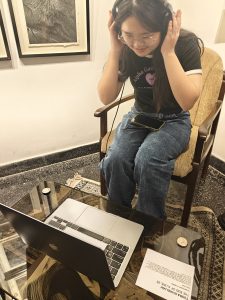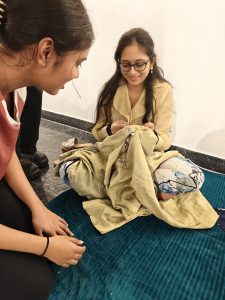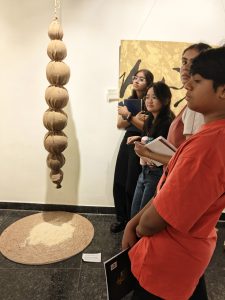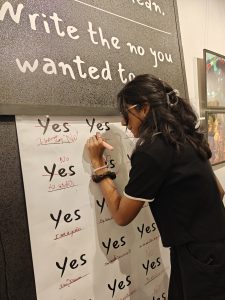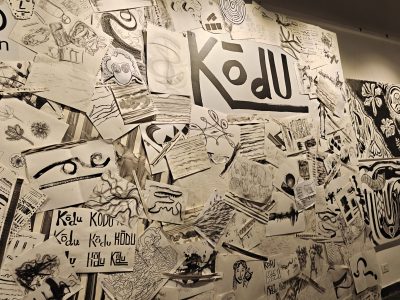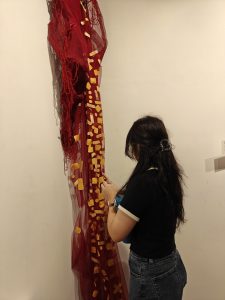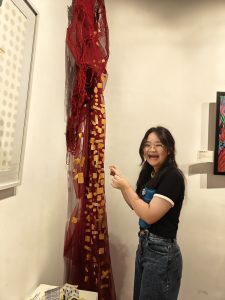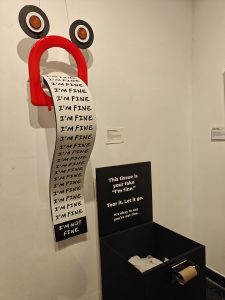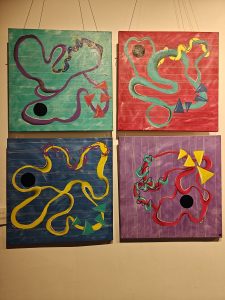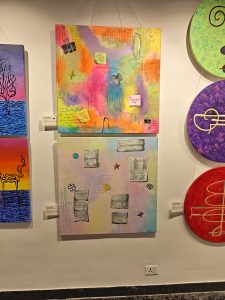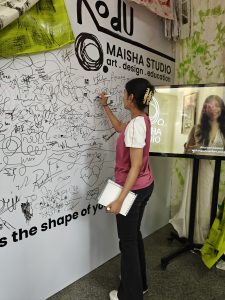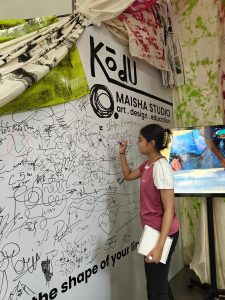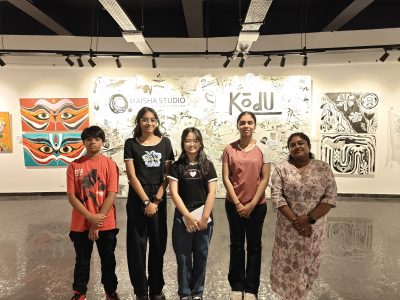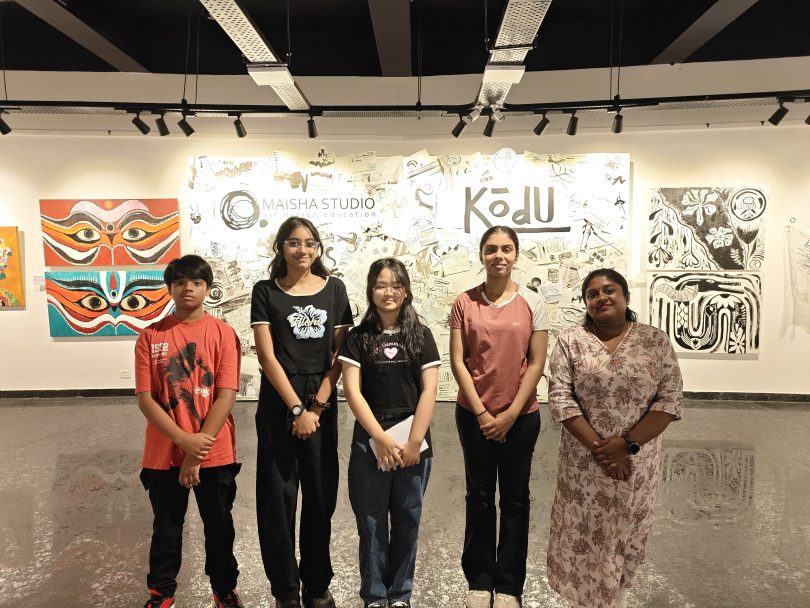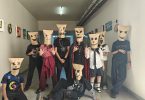Art Beyond the Surface: A Visit to KōdU, Maisha Studio’s Art and Design Exhibition
The Art & Design students of IGCSE Year 1 and Visual Arts students of IBDP Year 2 from CPS Global School, Thirumazhisai, recently experienced a transformative field trip to KōdU—the exhibition by Maisha Studio at Lalit Kala Akademi, Chennai. Curated by artist Aishwarya Manivannan, KōdU offered more than just visual delight; it opened a space for reflection, interaction, and deep artistic inquiry. Inspired by the Tamil word KōdU (line), the exhibition explored lines not only as visual elements but as metaphors of identity, memory, and emotion. Students were captivated by the way ordinary experiences—grief, movement, silence—were given form through thread, fabric, structure, and storytelling.
One of the most engaging parts of the visit was the live art-making installation, where students actively participated in creating a sustainable textile piece through hand-stitching alongside the artist. This collaborative process bridged the gap between artist and audience, making the creation itself a shared experience. Students also interacted with interactive installations such as “Wounded Line”, a visceral piece that invited viewers to engage with the rawness of trauma through band-aid plasters applied over a gushing red form. Another powerful installation titled “You Wanted to Say No” by Oviya Manivannan evoked deep conversations around consent, boundaries, and silenced experiences. The emotionally charged title and experience left a lasting impression on the viewers.
What truly enriched the visit was the opportunity to speak with the artists and studio mentors, whose openness and insights offered students an intimate look at the inspirations, struggles, and philosophies behind the works. The fact that many contributors were young and emerging artists made the entire experience deeply relatable and motivational.
KōdU was not just an exhibition—it was a living, breathing space for observation, unlearning, and becoming. As students moved through each immersive piece, they weren’t merely looking at art—they were walking through it, sensing it, stitching themselves into it.
Student Reflection
Today, I went to an art exhibit themed “KŌDU,” which means “line” in Tamil. It was fascinating to witness how such a simple concept, serving as the most basic element of art, could show us a diverse range of creative expressions. Each artist explored the idea of lines in unique ways — some literal, and others abstract — showing us the endless possibilities that this basic element of art can offer. I saw pieces made with paint, ink, thread, metal wires, and even light projections, each emphasizing the significance of lines in forming shapes, directing movement, and conveying emotion. There was one piece that stood out, which was done as a short film.
What I learnt today was how lines can symbolize both connection and division, as in some works, lines were interpreted as growth, nature, and the flow of life, whereas others were shown as fragmentations, tensions, or boundaries. The duality in this made me realize how something as simple as a line can carry deep meanings, representing pathways, choices, relationships, and even the progression of events. The exhibition also deepened my appreciation for how cultural context shapes artistic interpretation. The use of “KŌDU,” a Tamil word, connected the works to local identity and tradition while exploring universal artistic principles. Overall, it was an inspiring experience that broadened my understanding of the power of simple elements in art.
– Sreelakshimi IBDP 2
